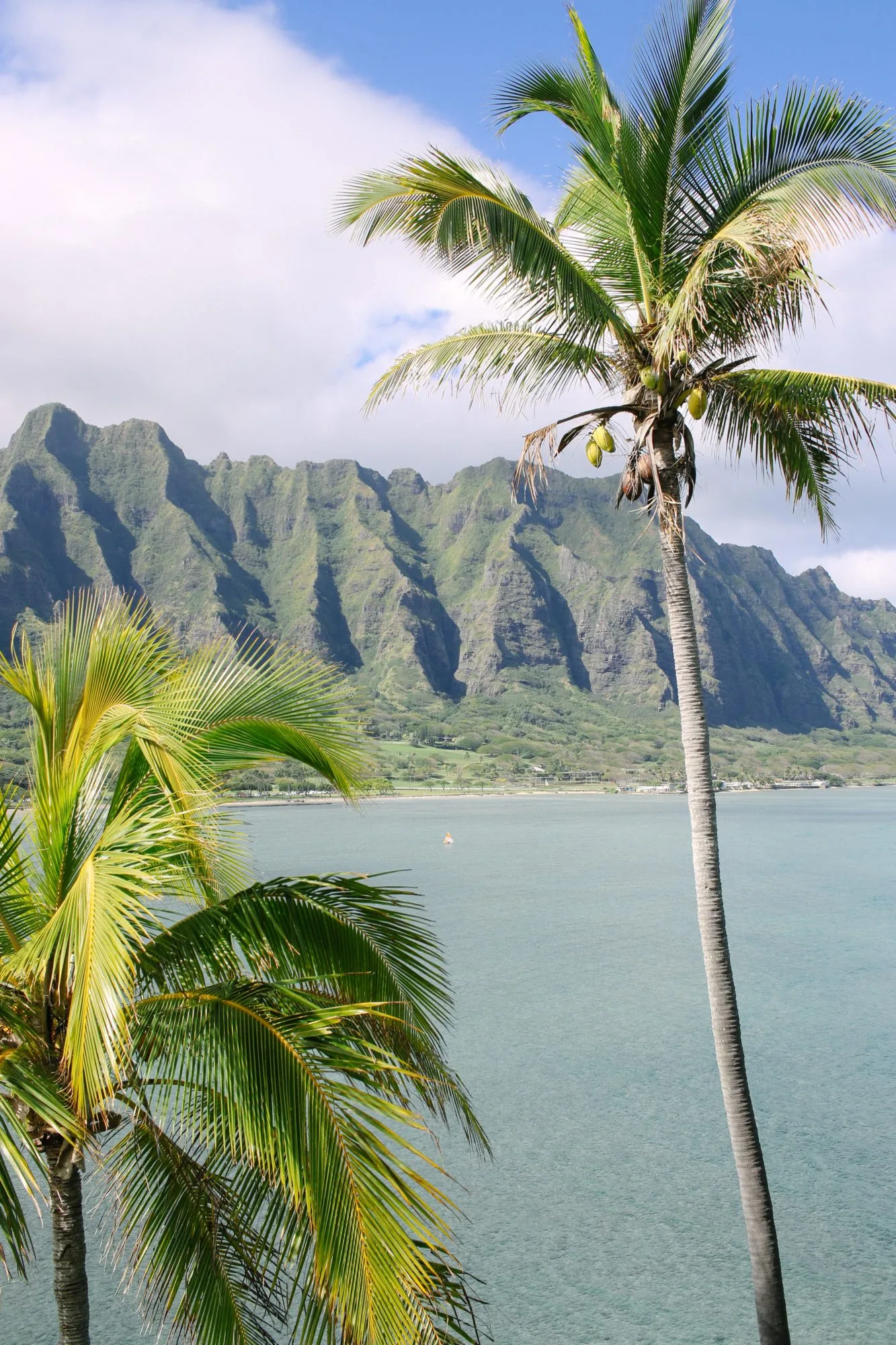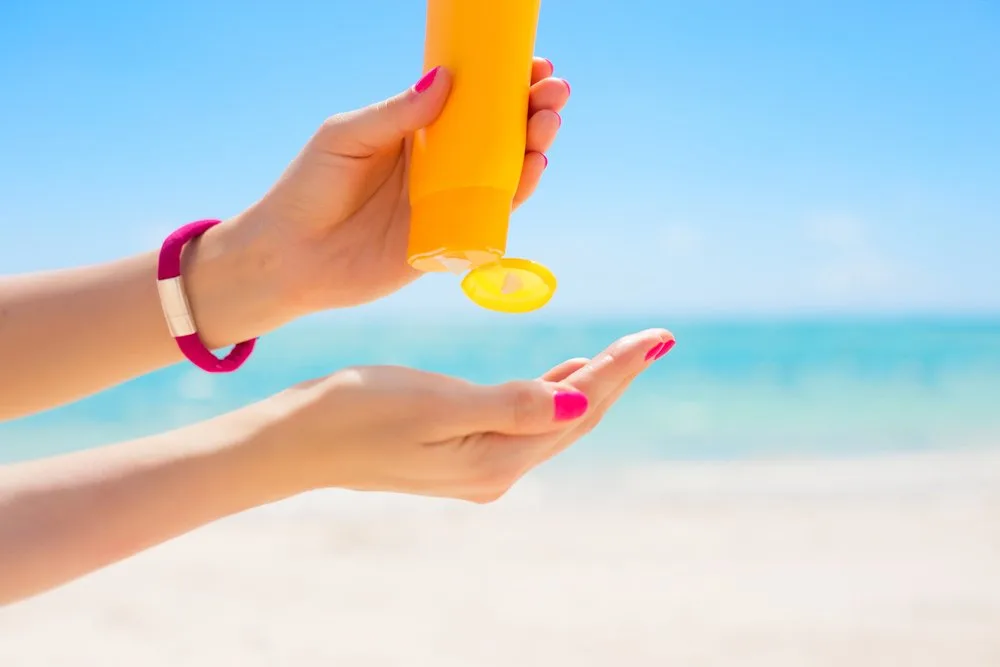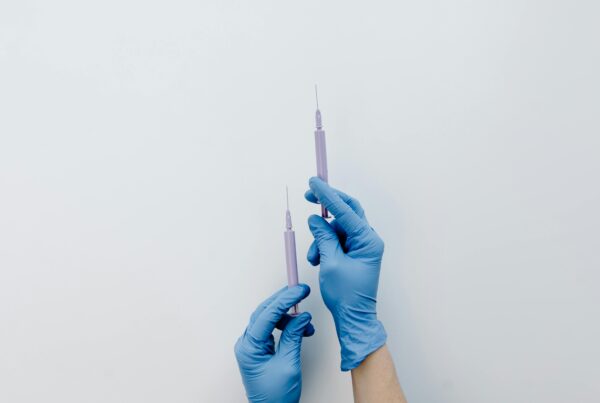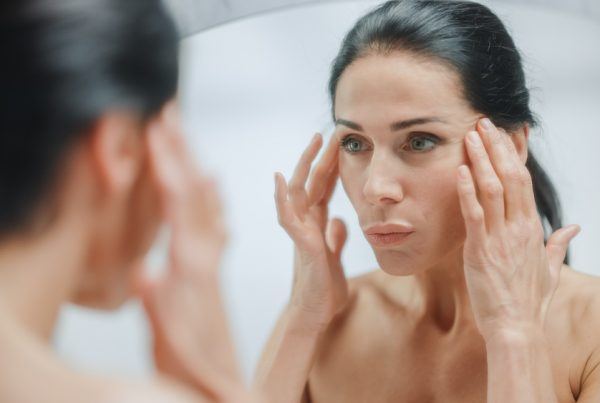While your chosen sunscreen brand probably does a fairly good job at protecting your skin from the harmful effects of the sun, it may well be toxic to the environment. Indeed, key public officials in Hawaii have spent the better part of 2017 debating and lobbying for a ban on certain sunscreen brands. The brand in question contains a UV filtering ingredient called oxybenzone.
The Link Between Oxybenzone, Sunscreen, And Coral Reefs
According to various published media sources and respected scientific journals, even in tiny quantities, the ingredient oxybenzone can poison the algae that symbiotically support coral reefs in oceans. These invertebrate animals in turn support the algae gardens that photosynthesize food from sunlight. This process provides 90% of the coral’s food.
Most of us are probably unaware that the residue left in the water from the sunscreen on our skin is contributing to the destruction of an already pressured ocean ecosystem. And it’s not just limited to bathing.

A 2015 study found oxybenzone in marine sediments located near wastewater facilities. This suggests that our sunscreen kills coral reefs without a human ever setting foot – or flipper – near them.
A CBS news broadcast in 2017 confirmed “researchers have found that oxybenzone, a UV filtering ingredient commonly found in lotions, harms the coral. Up to 14,000 tons of sunscreen wind up in coral reef areas of the ocean every year, and scientists say that contributes to the ecosystem’s damage.”
The research was not new. Already back in 2007 a study conducted by researchers at the University of Plymouth and published in the journal Applied and Environmental Microbiology found that certain sunscreen products cause rapid and complete bleaching of hard corals even at very low concentrations. The study documented that sunscreen killed coral by triggering an ordinarily dormant virus in their symbiotic algae.
This was affirmed in a 2008 study, published in the journal Environmental Health Perspective and conducted by researchers from the Polytechnic University of the Marche in Ancona, Italy. They found that oxybenzone wasn’t the only ingredient in sunscreen that harmed reefs.

These images from a 2008 study show the impact of sunscreen on Acropora coral. The brown ones are untreated—healthy coral—while the white ones have been bleached by sunscreen.
Roberto Danovaro et al.
They also cited Ethylhexyl methoxycinnamate and 4-methyl benzylidene camphor – which, like oxybenzone, absorb the sun’s rays – and butylparaben, a preservative, also destroyed coral reefs.
Will Hawaii Take the Lead and Ban Certain Sunscreen Products?
In the second half of 2017 Hawaiian state senator Will Espero and his supporters rallied to introduce a ban on products with oxybenzone.
Espero cited research published in the public domain to date, as well as a more recent paper published in 2015, in the journal Archives of Environmental Contamination and Toxicology led by Craig Downs, executive director of the Haereticus Environmental Laboratory in Clifford, Virginia. Downs has also been quoted as saying that oxybenzone is toxic to the symbiotic algae that live within the coral. He argues the algae provide the coral with much-needed oxygen and help cart away the coral’s waste. When the algae die off, the corals turn white (referred to as bleaching). With less oxygen and more waste, the coral struggles to survive. He also informs that oxybenzone is more toxic to plants when those plants are exposed to sunlight.
“I’d like to see Hawaii take the lead and make certain that we do all we can to protect our ocean environment,” Espero told CBS News.
Had the ban been successful in 2017, it could have far-reaching consequences for the long-term sales of many sunscreens. It is therefore not surprising that cosmetic companies directly affected by the proposed ban lodged their opposition. They argue that there is still not enough conclusive scientific evidence that sunscreen ingredients negatively impact coral reefs at levels detected in tourist areas.
On November 13th in 2017, the bill passed out of the Infrastructure and Environmental Management Committee. According to a report in the Maui News, two experts on coral reefs and toxicology also confirmed the chemicals could lower reef tolerance to bleaching and interrupt the development of marine life. They said tests along Maui’s shores had revealed more than enough oxybenzone and octinoxate to prove toxic to reefs.

However, in February 2018 council members voted to postpone a decision on the bill.
“At this point, if that’s what makes everybody feel comfortable with (the bill), then I’m for a little bit of postponement,” council member Elle Cochran told the Maui News, “But my office is going to work very hard to make sure we expedite it.”
According to the Maui News report, multiple council members said they thought the scientific evidence was strong, but they wanted to make the bill as legally sound as possible.
“I’m in support of this bill. I’m in support of making sure these coral reefs prosper,” Council Member Don Guzman, who is also an attorney. told Maui News. “I would feel more comfortable if we take the time to really present the evidence, build the right foundation and move forward with it just like we did with the Polystyrene bill.”
Incidentally in May 2017, the same council passed a ban on the use of polystyrene containers popular with plate lunch places, effective from December 31, 2018.
The legal issues surrounding the proposed ban appear to be more complex. Some suggest the management of nearshore waters is regulated and compounded by the fact that the federal commerce clause prevents states from interfering with interstate commerce. In addition, the U.S. Food and Drug Administration has approved both oxybenzone for use in sunscreens.
What is indisputable is that reefs are critical to ocean life. And while it is agreed there are multiple factors at play contributing to decimation, reefs around the world need to be protected. After all, coral reefs contribute to air and soil quality, provide spawning grounds for many fish species, and protect coastlines from the worst effects of tropical storms. Coral is under threat from a number of environmental factors such as acidification and warming of the oceans.
Some would argue that chemicals like oxybenzone appear to be a more alarming and direct danger to coral.
Coral reefs are some of the world’s most productive ecosystems. They form nurseries for roughly a quarter of the world’s fisheries, and more than a billion people depend on reefs for their livelihoods. A 2013 economic review by the National Oceanic Atmospheric Administration (NOAA) found that Hawaii’s coral reefs earned the state more than $356 million annually in tourist revenue alone.
Biologist Dr. Robert Richmond also told CBS News “You’re talking about a shot glass in a swimming pool. These are the kinds of levels where things began to have action,” Richmond said.
His research showed that even a trace amount of oxybenzone is toxic to coral.
“First thing they give up are things like reproduction and growth, and then it will eventually die,” Richmond said.
Is Oxybenzone Toxic to Humans?
If oxybenzone in such small quantities can kill off our coral reefs, then what could it be doing to our own health? There are research reports suggesting oxybenzone may also be harmful to human health as it is an endocrine (hormone) disruptor in humans. The Centers for Disease Control and Prevention estimate that 97% of Americans are contaminated with oxybenzone. It’s one of several chemical sunscreen ingredients that could do you much more harm than good.
A study in the International Journal of Andrology detected oxybenzone in 96 percent of the American urine samples it tested, and chemical UV-filters were detected in 85 percent of Swiss breast milk samples.
Oxybenzone has also been found to mimic oestrogen in cellular studies, while butylparaben, which is present in a host of cosmetics, in addition to sunscreen, has been linked to endocrine disruption. This can cause everything from development delays to poor reproductive health.

None of these studies are definitive, and the authors themselves call for more research.
A CNN broadcast back in 2012 already alluded to the dangers of oxybenzone and its use on the skin reporting; “Twenty-five percent of 800 tested screens are effective at protecting your skin without the use of potentially harmful ingredients,” according to the 2012 Sunscreen Guide released then by the Environmental Working Group.
“The results are slightly better than previous years, but it continues to surprise us that we can recommend such few products,” Nneka Leiba, an Environmental Working Group senior analyst, told CNN.
To make the watchdog group’s safe list, sunscreens must be free of oxybenzone, retinyl palmitate (a type of vitamin A), not have SPF above 50, and protect against UVA and UVB sun rays.
Why You Should Care About What Sunscreen You Use
The Environmental Working Group reported at the time that “56% of beach and sports sunscreens contain the chemical oxybenzone. The primary function of oxybenzone is to absorb ultraviolet light, but some research shows oxybenzone can be absorbed through the skin. The Environmental Working Group and other toxicology experts believe that oxybenzone is linked to hormone disruption and potentially to cell damage that may lead to skin cancer.”
However, the American Academy of Dermatology advised that oxybenzone is safe. “Oxybenzone is one of the few FDA-approved ingredients that provides effective broad-spectrum protection from UV radiation, and has been approved for use since 1978,” said Dr. Daniel M. Siegel, president of the academy. The Food and Drug Administration has approved oxybenzone in sunscreen for use on children older than 6 months.”
Leiba was still resolute in the Working Group’s position; “We will continue to push for better options every year. We’re trying to fill the gap where the FDA has failed,” she told CNN at the time.
In the same media report, Dr. Ariel Ostad, a clinical assistant professor in the department of dermatology at New York University Medical Center who was not affiliated with the Environmental Working Group, was quoted as saying “Evidence has shown the best sunscreens are the ones that block UVB and UVA. The majority of these companies that market sunscreen products try to make people more aware of the SPF.
The Environmental Working Group said consumers should not purchase a sunscreen with SPF greater than 50. SPF (sun protection factor) works by absorbing, reflecting, or scattering the sun’s rays on the skin.
“It is very misleading to put high SPF numbers on labels because it gives consumers a false sense of security and doesn’t offer a lot more protection,” Leiba added.
“Studies show that sunscreen with SPF 15 can block about 93% of all incoming UVB rays. SPF 30 blocks 97%. SPF 50 blocks 98%. The protective factors plateau from there. A product with SPF 100+ blocks about 99.1 percent of the UVB rays,” Ostad said. “You don’t really need a high number. They end up being expensive and don’t offer more protection than SPF 50. Keep in mind, SPF protects only against UVB rays.”
Since the report in 2012, the FDA’s position remains unchanged.
What You Can Do
Not all sunscreens contain oxybenzone. Chemical sunscreens, which are absorbed into the skin, usually do (sometimes listed as benzophenone-3) and they are the ones that Hawaii is considering banning. They work by absorbing the sun’s rays.
Mineral sunscreens, which usually contain titanium dioxide or zinc oxide, work differently—they physically reflect the sun’s rays.
You can take these steps to protect yourself and your family:
- Avoid products containing oxybenzone, benzophenone-3, and retinyl palmitate if you’re concerned about potentially toxic chemicals;
- Use sunscreen with a minimum of SPF 15 and a maximum of SPF 50;
- Make sure labels list UVA and UVB (or broad spectrum protection);
- Choose cream preparation rather than spray sunscreen. Creams and lotions are more evenly distributed on the skin and therefore offer better protection. It’s important to ensure you apply a good cover over your skin and that you reapply sunscreen often. The sun breaks down the ingredients in sunscreen that protect your skin. Experts recommend reapplying every two hours, or after swimming or heavy sweating.
- You can also protect yourself against the harmful effects of the sun, by wearing sun-protective clothing, always wearing a hat, and sitting under a good quality sun umbrella.
- Taking a responsible approach to how much time you spend directly under the sun can prevent sun damage.
Of course, you can help lobby for change through your local authorities and share articles and information with family and friends on this issue.
While the ban appears only to be led by Hawaii activists at this stage, it has implications across the globe. Concerns about oxybenzone were raised by scientists over a decade ago when the first research paper was published. It’s not new and yet the debate and the damage still continue.
One can’t escape the perversity in this issue: That the very reason we wear sunscreen makes our sunscreen uniquely toxic to coral reefs and perhaps even the sustainability of ocean life.
It is our collective responsibility to hold legislators and manufacturers to account. To ensure that we all contribute to protecting the environment, our long-term health, and that of our children and their children’s children.



![women [longevity live]](https://longevitylive.com/wp-content/uploads/2020/01/photo-of-women-walking-down-the-street-1116984-100x100.jpg)











Very interesting article – have referred it to friends & family for information – thank you!
Thank you for taking time to read this article and for sharing it Lois.
Good article! It is an absolute delight when a writer focuses the full power of investigative journalism skills, and provides a good historical context. Thank you! And thank you for raising the issue of “sunscreen abuse.”
Dear Craig,
Thank you for your comments. I appreciate you took the time to read my article and to comment. As you have expertise in this area, your feedback is valued. I will keep tracking this story and hope in time I can get more input from you.